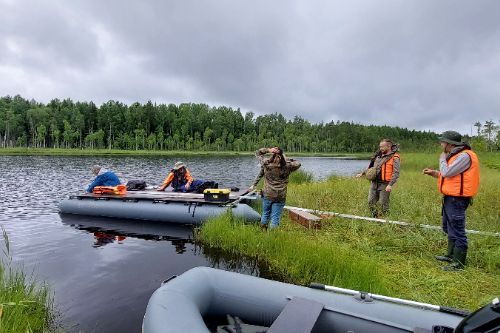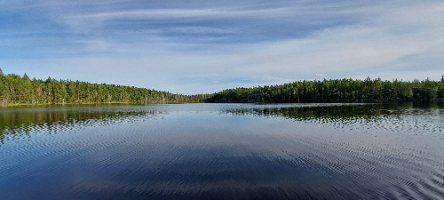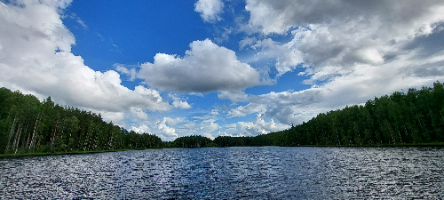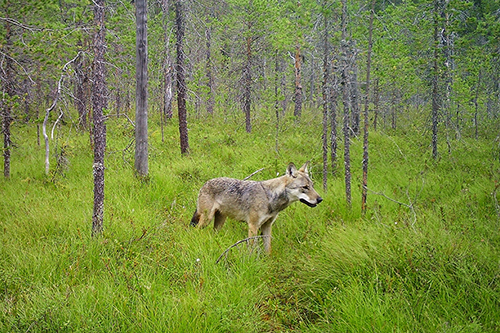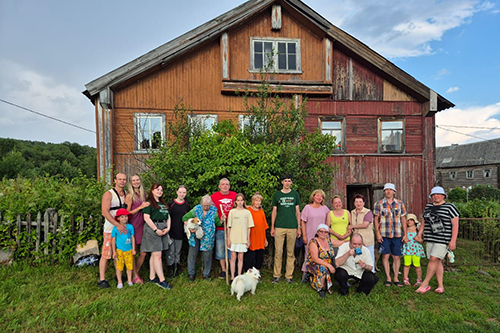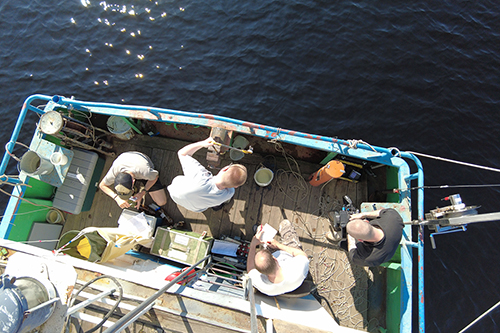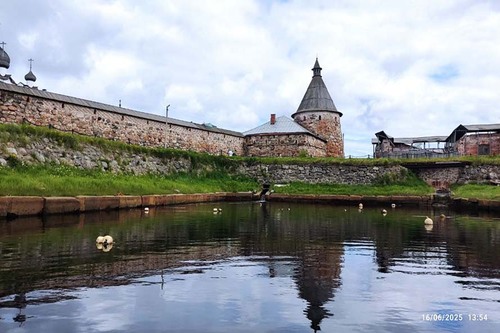Last summer, paleolimnogists - specialists who study the history of lakes - took an expedition to small lakes in Zaonezhsky Peninsula area: Lavkozero, Gangozero and Velikoye. They are located near Unitskaya Bay of Lake Onego, in the Kondopoga District. The scientists took samples - columns of bottom sediments from the relict water bodies.
– The relict lakes are remnants of the Onego Ice Lake. The retreating glacier exposed new thresholds of the ancient lake's runoff, the water level dropped sharply and a number of basins became detached, which now serve as archives of ancient sediments. Such water bodies are mainly located in Zaonezhsky Peninsula area. The thickest (up to 10 m or more) cross-sections of glacio-lacustrine and lacustrine sediments have been found there, - said Maksim Potakhin, project participant, Senior Researcher of the Bottom Sediments Research Group of the Northern Water Problems Institute KarRC RAS.
These glacio-lacustrine sediments, represented i.a. by varved clay, are repositories of unique information about the natural and climatic environments and features of their time. For example, the periglacial stages, during which the water body was in contact with the glacial margin, are characterized by sandy-clay sediments with a large admixture of clastic rock material. The retreat of the glacier created conditions for the spread of vegetation on the shores, the emergence of life within the lake and the accumulation of lake silt. The spores and pollen present in the sediments can be used to reconstruct what the forests were like at one time or another. For example, during the warmest, Atlantic period (9-6 Ka BP), conifers in Zaonezhye coexisted with elm, oak, linden, maple, hazel and other broad-leaved tree species.
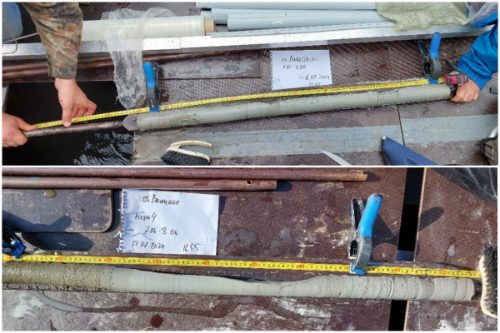
Sediment cores from Lake Lavkozero (top) and Lake Velikoye (bottom)
A remarkable and mysterious feature of the ice-lake sediments is the presence of a “pink horizon”. It appears as a 10 to 30 cm thick reddish-brown region in the varved clay cross-section. Its formation was dated to around 13 Ka BP, turning it into a marker of lake age. The obvious contrast of its lower boundary and its mineral composition point to an abrupt change of the sedimentation environment triggered by a local- or a large-scale event. Until recently, it was thought that these sediments underwent rapid oxidation when a new drainage path from the ice lake towards the White Sea opened up and the water level dropped sharply. A theory discussed lately is that of a meteorite impact catastrophe, which resulted in an abrupt and brief global cooling, which affected the reservoir as well.
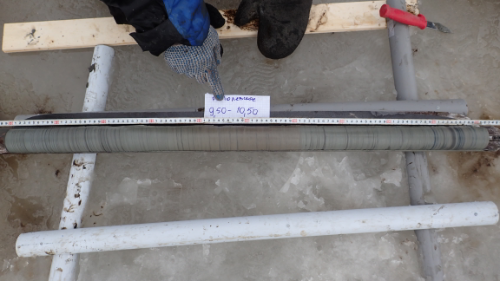
Sediment core from Lake Polevskoye (Zaonezhsky Peninsulathe ), with “pink horizon” clearly visible
Previously, this peculiar region in clay was found in boreholes only within the area Onego Ice Lake used to occupy, including the water bodies studied in the summer. Now, a similar horizon has also been found in Lake Ladoga area. The results of studies of glacio-lacustrine sediments, including the “pink horizon”, were presented by the project participants at the conference “Paleolimnology of Northern Eurasia” in Krasnoyarsk. The conference proceedings were published in the journal of Limnology and Freshwater Biology.
In general, sediment cross-sections contain information on the timing of small lake isolation. It is important for reliable reconstruction of the Late Glacial history of the territory and for delineating the boundaries and stages of Lake Onego change.
– Historical reconstructions are made using the method of isolated basins. Relict lakes are situated at different elevations, viz. Lavkozero at about 60 m above sea level, Gangozero at 75 m. Knowing the elevation and the isolation time - determined by sediment dating, one can make a model and trace the changes in the level of the ancient water body, – explained Maksim Potakhin.

Preparing for fieldwork on Lake Velikoye
By the way, the present-day Lake Onego is also a relict. Having originated as a tectonic lake at the junction of the crystalline Baltic (Fennoscandian) Shield and the sedimentary Russian Platform in ancient geological epochs, it has undergone multiple transformations.
– During a series of Pleistocene glaciations there occurred glacial plowing events: ice streams filled lake basins, carrying away almost all loose sedimentary material and impacting the harder metamorphic and igneous rocks. During interglacials there formed water bodies: not only fresh-water but also salt-water. Sedimentary rocks accumulated in the lake basins. The next glaciation, however, carried it all away once again. Lake Onego, like the Phoenix, was reborn over and over again, except not out of fire, but out of ice. After losing contact with the glacier, the lake turned into a relict. Nowadays, Lake Onego is a partially artificial water body: dam construction on the Svir River in the 1950s converted it into a part of the Verkhne-Svirskoye storage reservoir. Such was the natural and man-made transformation of the lake, – expounded Maksim Potakhin.
In the course of the project, the researchers will identify the global, regional and local environmental and climatic factors that have influenced the formation of the glacio-lacustrine and lacustrine sediments. Possible factors could be changes in solar energy input, e.g. due to dustiness of the atmosphere as a result of volcanic activity or meteorite impact, as well as aeolian processes, i.e. sand scattering from the then vast open territories lacking soil cover. Experts argue that reconstruction of the response of aquatic ecosystems to climate change is a prerequisite for predicting similar future events.
Photos by D.A. Subetto / Herzen State Pedagogical University of Russia




